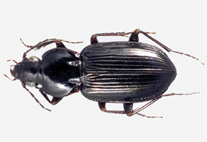Abstract
Trypanosoma naviformis n. sp. is described from the African olive sunbird Cyanomitra olivacea in Ghana based on the morphology of its hematozoic trypomastigotes and partial sequences of the small subunit ribosomal RNA gene. This parasite belongs to the group of small non-striated avian trypanosomes (< 30 µm in length in average) with the kinetoplast situated close to the posterior end of the body. Trypanosoma naviformis can be distinguished from other small avian trypanosomes due to its poorly visible flagellum, central position of its nucleus, and the symmetrically (in relation to the nucleus) narrowing of both ends of the hematozoic trypomastigotes, which are boat-like in shape. Illustrations of trypomastigotes of the new species are given, and SSU rDNA lineages associated with this parasite are documented. This parasite has been reported in Ghana and Cameroon and was also found in the yellow-whiskered greenbul, Andropadus latirostris in these countries. It appears to be widespread in its range given the distribution of these bird species in Africa.

